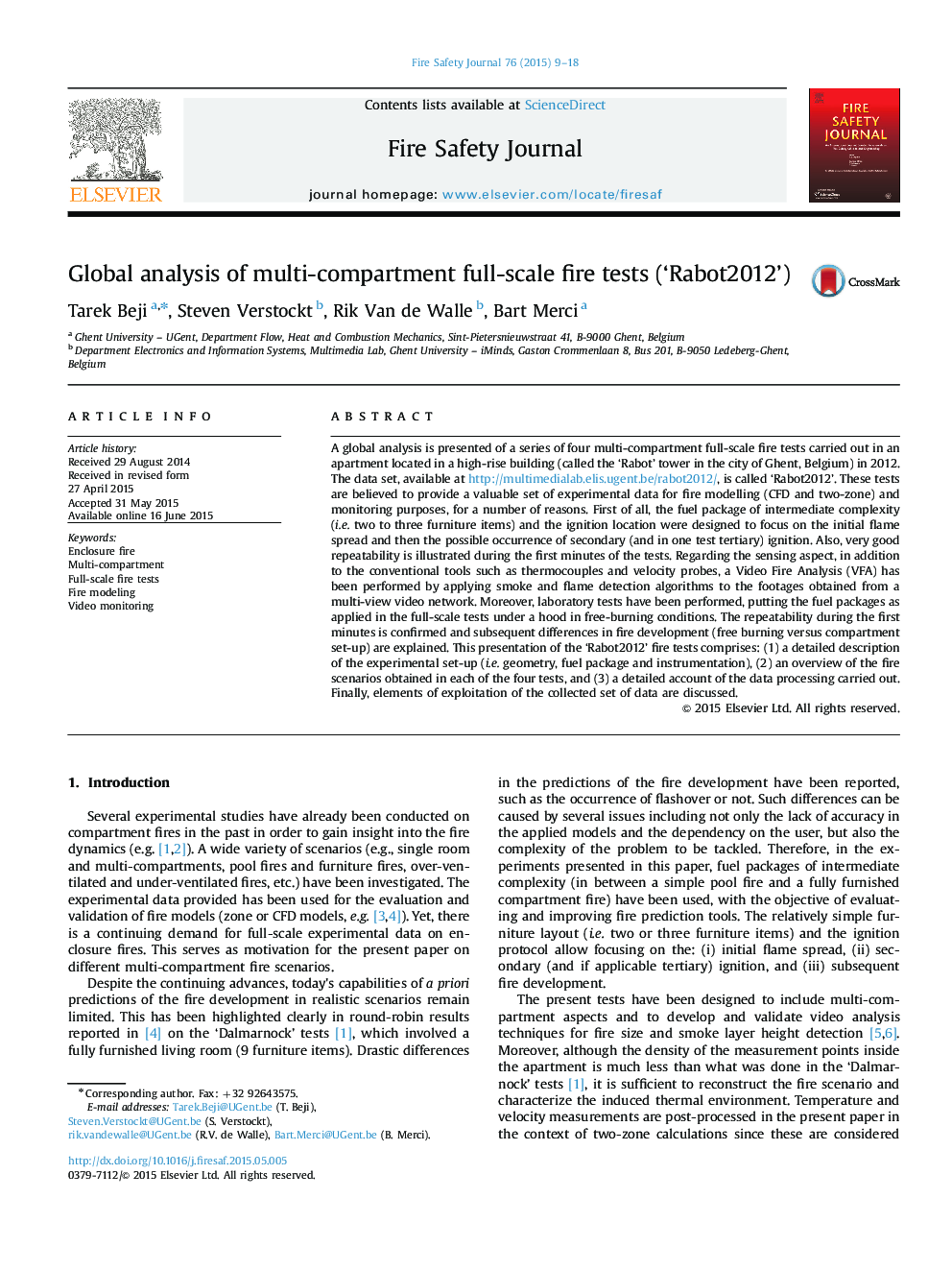| کد مقاله | کد نشریه | سال انتشار | مقاله انگلیسی | نسخه تمام متن |
|---|---|---|---|---|
| 269751 | 504699 | 2015 | 10 صفحه PDF | دانلود رایگان |

• Multi-compartment full-scale fire tests were carried out.
• Sofas and bookshelves were used as fuel packages.
• A global analysis of the fire dynamics is performed using conventional sensors as well as Video Fire Analysis (VFA).
A global analysis is presented of a series of four multi-compartment full-scale fire tests carried out in an apartment located in a high-rise building (called the ‘Rabot’ tower in the city of Ghent, Belgium) in 2012. The data set, available at http://multimedialab.elis.ugent.be/rabot2012/, is called ‘Rabot2012’. These tests are believed to provide a valuable set of experimental data for fire modelling (CFD and two-zone) and monitoring purposes, for a number of reasons. First of all, the fuel package of intermediate complexity (i.e. two to three furniture items) and the ignition location were designed to focus on the initial flame spread and then the possible occurrence of secondary (and in one test tertiary) ignition. Also, very good repeatability is illustrated during the first minutes of the tests. Regarding the sensing aspect, in addition to the conventional tools such as thermocouples and velocity probes, a Video Fire Analysis (VFA) has been performed by applying smoke and flame detection algorithms to the footages obtained from a multi-view video network. Moreover, laboratory tests have been performed, putting the fuel packages as applied in the full-scale tests under a hood in free-burning conditions. The repeatability during the first minutes is confirmed and subsequent differences in fire development (free burning versus compartment set-up) are explained. This presentation of the ‘Rabot2012’ fire tests comprises: (1) a detailed description of the experimental set-up (i.e. geometry, fuel package and instrumentation), (2) an overview of the fire scenarios obtained in each of the four tests, and (3) a detailed account of the data processing carried out. Finally, elements of exploitation of the collected set of data are discussed.
Journal: Fire Safety Journal - Volume 76, August 2015, Pages 9–18